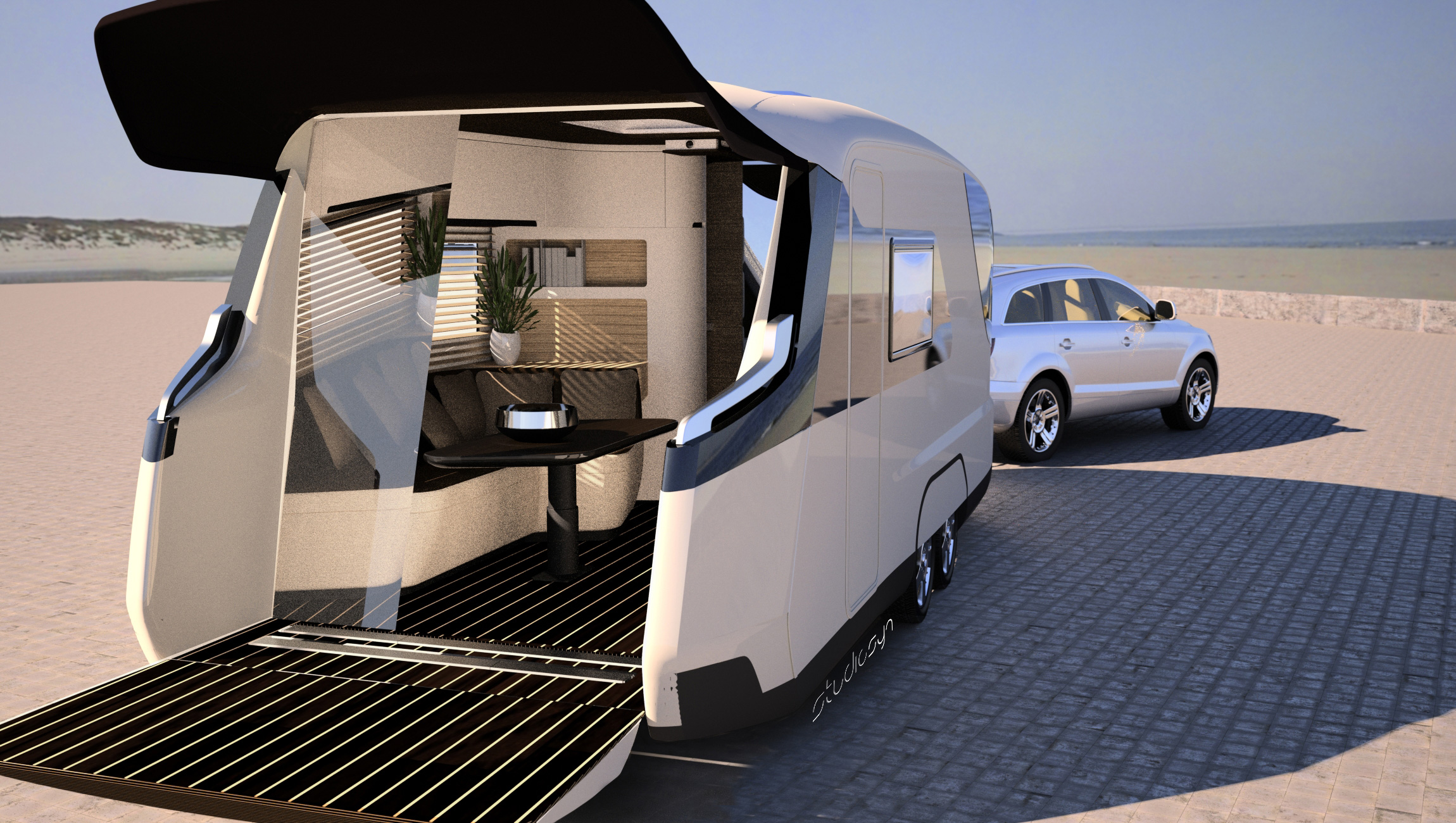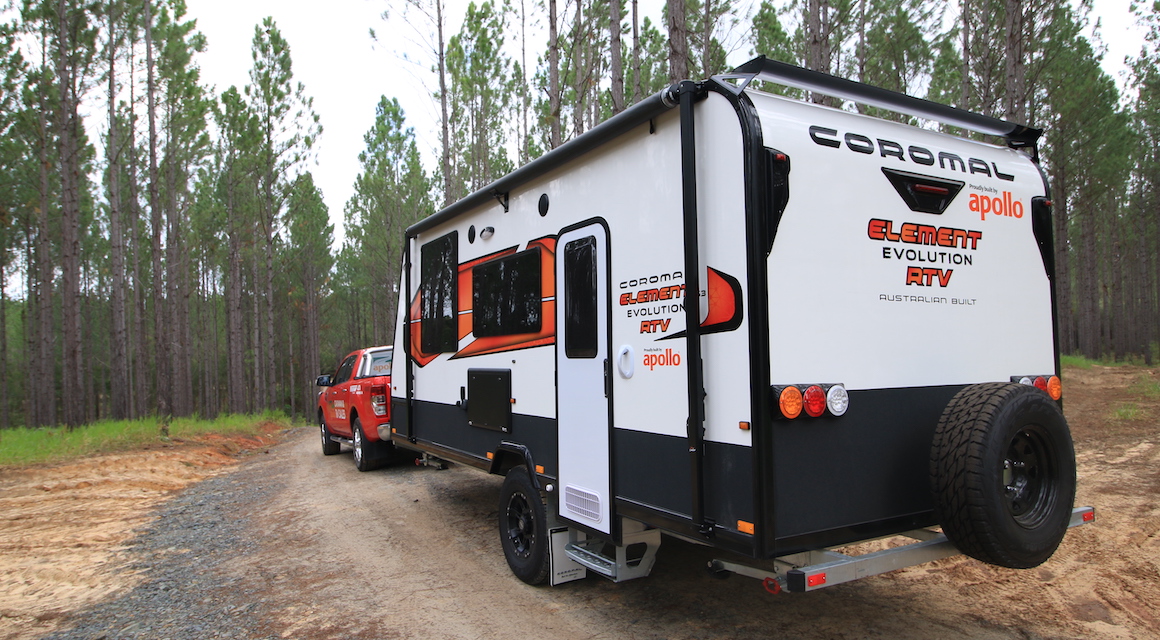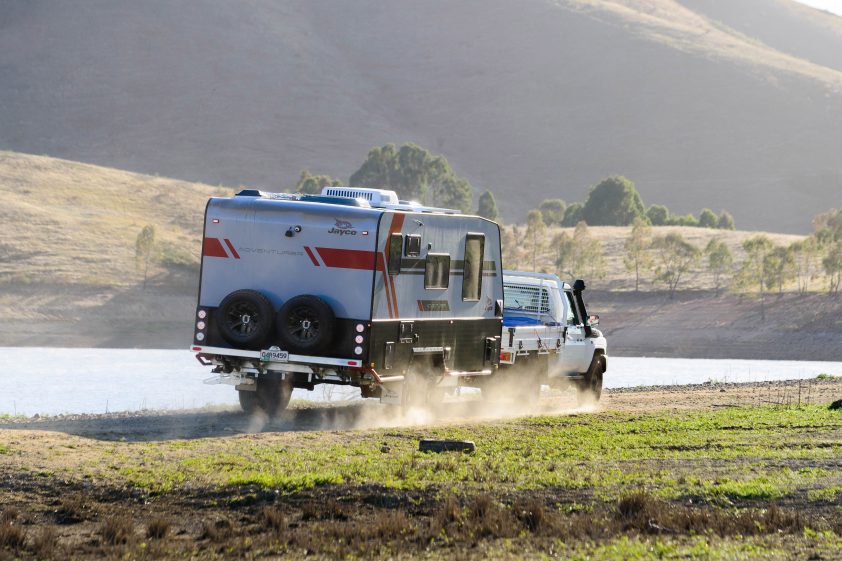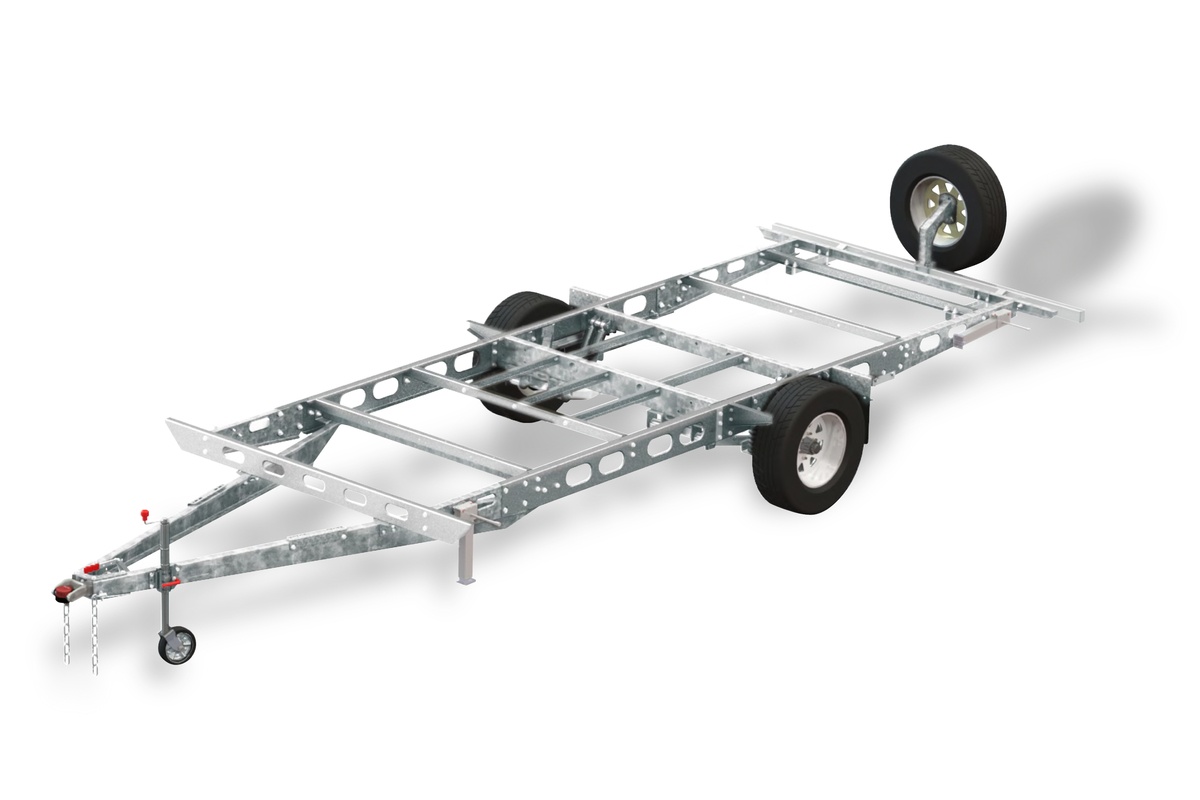With increases in leisure time and wealth, the popularity of the caravan in Australia has blossomed over the last 20 years. So what will manufacturers need to do in order to continue that trend and broaden the appeal of a nomadic life?
A simple image search shows there is a great deal of work going into how new caravans will look – many teetering on plastic reinterpretations of the classic Airstream trailer. A recent, widely acclaimed example is the Caravisio study by German caravan manufacturer Knaus. Caravisio’s standout feature is its fold-down rear ‘terrace’, complete with deck chair and swooped cloth awning. It also features smartphone/tablet-controllable lighting and projects movies onto the rear glass wall. There’s a great video tour on YouTube.
To get an industry perspective on this, I spoke to Neil Grima, director of Billabong Caravans and One Stop Caravan Shop.
What do you predict in future caravan interiors?
Caravan interiors have come a long way in the past decade. I can see lots more plastics being used and moulded into stylish furniture and fixtures. We will see more appliances such as dishwashers appear, and remote and sensor-activated lighting will probably make its way in.
How do we build better caravans?
Weight is a huge problem – the industry is putting so many features into today’s vans that the average vehicle towing capacity is not keeping up with the requirements. We will see exotic materials being introduced, especially in suspension components . High-strength, lightweight materials are needed in this area as the off-road suspension components of today, while strong, are extremely heavy.
Where is caravan safety heading in the next decade?
Caravan safety is a critical area. We have recently seen the introduction of electronic stability control (ESC) into the Australian market, and that is probably long overdue. I believe ESC will become mandatory in all new caravans in the near future and the option of retrofitting ESC is becoming extremely attractive to most caravanners. Testing of ESC has proven to be a critical part of today’s must-have caravan safety equipment.
There has also been much interest in powered disc brake systems for caravans. The data available on this stopping system is also quite promising and shows disc brakes have a far superior stopping capacity to the conventional drum brake system – this is another feature I believe will make its way into the caravan industry. Suspensions will [benefit from] new, stronger and more lightweight materials. And with a combination of new suspensions and added safety equipment, we will have a much more comfortable caravan following behind in the future.
Neil summed up the caravan of the future as, “More self-sufficient [in the areas of] power consumption and power regeneration. It will be lighter in weight and will include more safety features as standard.” Perhaps, also, we will see new form factors that suit a broader range of people – smaller formats that make even better use of space than we do now.
Find out more about how technology is changing caravan design.
Image credit ‘Knaus Tabbert GmbH’





